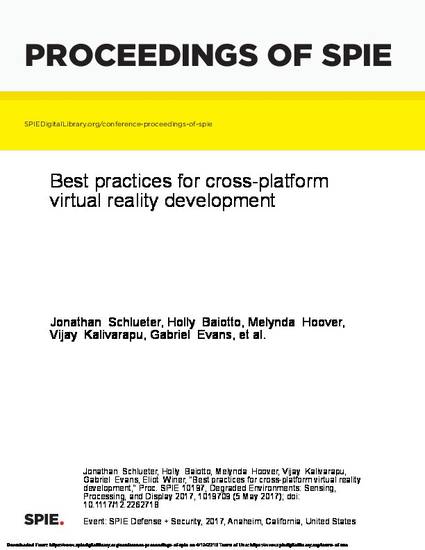
Virtual Reality (VR) simulations have become a major component of the US Military and commercial training. VR is an attractive training method because it is readily available at a lower cost than traditional training methods. This has led to a staggering increase in demand for VR technology and research. To meet this demand, game engines such as Unity3D and Unreal have made substantial efforts to support various forms of VR, including the HTC Vive, smartphone-enabled devices like the GearVR, and with appropriate plugins, even fully-immersive Cave Automatic Virtual Environment (CAVETM) systems. Because of this hardware diversity, there is a need to develop VR applications that can operate on several systems, also known as cross-platform development. The goal in developing applications for all these types of systems is to create a consistent user experience across the devices. It is challenging to maintain this consistent user experience, because many VR devices have fundamental differences. Research has begun to explore ways of developing one application for multiple system. The Virtual Reality Applications Center (VRAC) developed a VR football “Game Day” simulation that was deployed to three devices: CAVETM, Oculus Rift HMD and a mobile HMD. Development of this application presented many learning opportunities regarding cross-platform development. There is no single approach to achieving consistency across VR systems, but the authors hope to disseminate these best practices in cross-platform VR development through the game day application example. This research will help the US Military develop applications to be deployed across many VR systems.
Available at: http://works.bepress.com/vijay_kalivarapu/20/

This proceeding is published as Jonathan Schlueter, Holly Baiotto, Melynda Hoover, Vijay Kalivarapu, Gabriel Evans, Eliot Winer, "Best practices for cross-platform virtual reality development," Proc. SPIE 10197, Degraded Environments: Sensing, Processing, and Display 2017, 1019709 (5 May 2017); doi: 10.1117/12.2262718. Posted with permission.